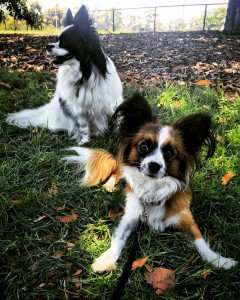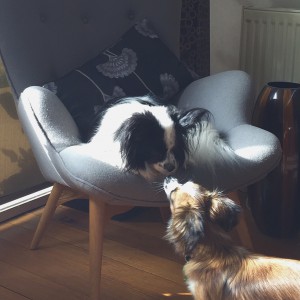Last month I adopted another beautiful doggie into my family. It wasn’t exactly planned, but I’ve always believed in that old training truism that you end up with the dogs you deserve and perhaps those that need you too. From the moment I saw little Leila in the dog shelter I knew she was coming home with me. Some might call this ‘puppy love’ at first sight, and while I think feeling a connection to a dog is very much part of selecting a new fur companion, the truth is there was actually quite a bit of careful consideration and logic for the many months before adopting her that led me to deciding that she was the one who’d be joining our family.
Making the decision to adopt another dog….

The first important consideration is whether it is the right time to add another pet to your family. For me, the time and situation was right. After the sad passing of my beautiful dog Daisy earlier this year at the very decent age of about 15 , (see blog entry about Daisy), I was conscious that Rupert, my adorable papillon, was the only canine member of the house remaining. To me dogs are social animals and although Rupert is quite independent in many ways, I felt it was good for him to have another four legged pal. But for those not used to multi-pet households, its important to be aware of the extra responsibilities that go with additional pets.
Puppy or mature dog…
The next big decision was whether a puppy or adult dog was the way to go – or perhaps even a senior dog. With puppies you have a greater opportunity to shape their behaviour from the beginning, but puppies need a great deal of attention and can cause additional stress to more mature animals in a household. Senior pets can be a wonderful option – they have usually settled a great deal and can often be content to sleep much of the day. But you need to consider that health conditions can increase with age and if you have a younger pet that you want companionship for, this might not be the best choice. For me, given that Rupert is six years of age, I wanted a companion that was at least a little closer in age to him – at least in spirit! So I had in mind an adult dog anywhere between 2 years to seven years give or take some months.
Where to go to find your new family member…

For me the choices for adopting your dog are either from a reputable registered breeder if you have your heart set on a particular breed, or a rescue pet. There are many local pet rescue organisations in Australia and globally – sometimes it can be a bit overwhelming. My go-to source has always been the Pet Rescue website (www.petrescue.com.au) as it’s effectively a directory for many different rescue organisations and shelters.
I made couple of enquiries about dogs through the Pet Rescue site I thought might be a good fit for our family. But it was after a walk with a friend, who was herself looking to adopt, that fate stepped in. I suggested we pop into the Lost Dogs Home in North Melbourne on the off chance they had a dog she may want to adopt. Needless to say, I was the one who walked out with a little two year ‘oldish’ papillon cross chihuahua!
Picking the right breed and temperament for your lifestyle…
I love all dogs and truth be known, would adore to add a larger-breed pooch to our clan, but my city townhouse and lifestyle just isn’t built for it at the moment. Smaller toy breeds suit me and my family’s lifestyle so that was part of criteria – which Leila met with flying colours! Rescue dogs more often than not come as mixed breeds, which can make this a bit more challenging, but look for the characteristics that seem to dominant both physically and temperament wise and be guided by that. The shelter organisations are usually a great help with helping you determine what is right for you.
Compatibility with other family members…

If you are looking for an additional pet as a companion for existing one, then it is of course crucial that they get along. This can be hard to pick initially, as the way dogs behave particularly in a busy, stressful shelter environment can be quite misleading. When I first introduced Rupert and Leila it was at the shelter and it was encouraging – they shared a little sniff but but largely ignored each other, and seemed quite relaxed around each other despite the tense atmosphere. But I also had to be prepared to see if time in our home would change that dynamic. Fortunately through careful introductions and observing their time together, they are starting to connect, but it’s still early days yet and I’ll continue to watch and support their relationship to develop.
Accepting and being committed to working on behavioural issues…
Adopting an adult dog where you know nothing of their history can be a mixed bag of surprises, and you have to be prepared to have patience and work out whether some of those issues might be too much for your family to manage. Many rescue and fostering organisations are very careful about making sure dogs in their care are paired to the right families. As a dog trainer, I was prepared and knowledgable about how to deal with a wide range of possible behavioural issues, but Leila was also coming into our family; it was important that the other human members in the home could live and work on those issues too. As wonderfully kind hearted as it is to rescue any dog, it’s equally important that you are prepared to learn the skills, commit the time and have extraordinary patience to recognise and properly manage behavioural issues.
In future blogs I will explain some of the successful approaches I have used to introduce Leila into our family and home, how we’ve worked through addressing her behavioural issues, and some of the important lessons she’s already starting teach me.
